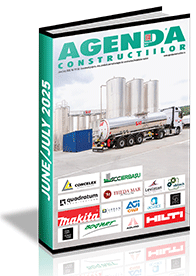| CONSULTANCY: The proper sealing and its influences on the building process |
| English Section Publicat de AG&F 13 Mai 2013 11:26 |
 In order to meet the requirements of passive house standard, the main parameters to be considered for a building relate to the degree of insulation (to eliminate heat loss) and sealing elements entering in the envelope structure and roof. Regarding the first element the direct dependence between the energy consumption for heating/air conditioning and thermal conductivity is obvious to all experts. The influence of the second parameter on the overall performance of the building is more nuanced, as comfort is a function that depends on a great range of elements, including air quality. The complete prevention of the air flow through the walls structure and other elements that separate the outside from the inside can have long-term negative effects if the seal does not take into account several essential aspects. At the Technical University of Innsbruck was developed a research project aimed at identifying the mechanical and thermal properties of foam glass granulate. If you need to implement high performance insulation systems to the construction of the future, one of the areas that will require attention is the proper containment of the building elements that come into direct contact with the ground. Typically, the materials used for this purpose shall be installed under the foundation, and an ideal solution for such applications must have both bearing and thermal insulating characteristics. In addition, due to the inorganic composition, the analyzed material will not rot, it is resistant to the destructive actions of insects and oil and the amount of water absorbed by the structure is minimal. Currently, this solution is not widely used because the information regarding its fundamental properties lacks. Granulated foam glass is a product made entirely out of recycled materials. The manufacturing process consists in sorting, breaking and separating fine particles of glass, by means of a conventional grinding. Thereafter, the composition thus obtained is added to an activator, and then the resulted amalgam is heat treated in a special oven at a temperature of 900°C, which provides the fusion of the particles. For further information and a detailed analysis of the current TOP-Agenda Constructiilor issue click here! In order to meet the requirements of passive house standard, the main parameters to be considered for a building relate to the degree of insulation (to eliminate heat loss) and sealing elements entering in the envelope structure and roof. Regarding the first element the direct dependence between the energy consumption for heating/air conditioning and thermal conductivity is obvious to all experts. The influence of the second parameter on the overall performance of the building is more nuanced, as comfort is a function that depends on a great range of elements, including air quality. The complete prevention of the air flow through the walls structure and other elements that separate the outside from the inside can have long-term negative effects if the seal does not take into account several essential aspects. At the Technical University of Innsbruck was developed a research project aimed at identifying the mechanical and thermal properties of foam glass granulate. If you need to implement high performance insulation systems to the construction of the future, one of the areas that will require attention is the proper containment of the building elements that come into direct contact with the ground. Typically, the materials used for this purpose shall be installed under the foundation, and an ideal solution for such applications must have both bearing and thermal insulating characteristics. In addition, due to the inorganic composition, the analyzed material will not rot, it is resistant to the destructive actions of insects and oil and the amount of water absorbed by the structure is minimal. Currently, this solution is not widely used because the information regarding its fundamental properties lacks. Granulated foam glass is a product made entirely out of recycled materials. The manufacturing process consists in sorting, breaking and separating fine particles of glass, by means of a conventional grinding. Thereafter, the composition thus obtained is added to an activator, and then the resulted amalgam is heat treated in a special oven at a temperature of 900°C, which provides the fusion of the particles. For further information and a detailed analysis of the current TOP-Agenda Constructiilor issue click here! |
ABONARE REVISTA (click aici): PROIECTE | INVESTITII | REVISTE | INDEX COMPANII
DATE DE CONTACT: Agenda Constructiilor & Fereastra - Tel/Fax: 021-336.04.16, 031-401.63.88




















































